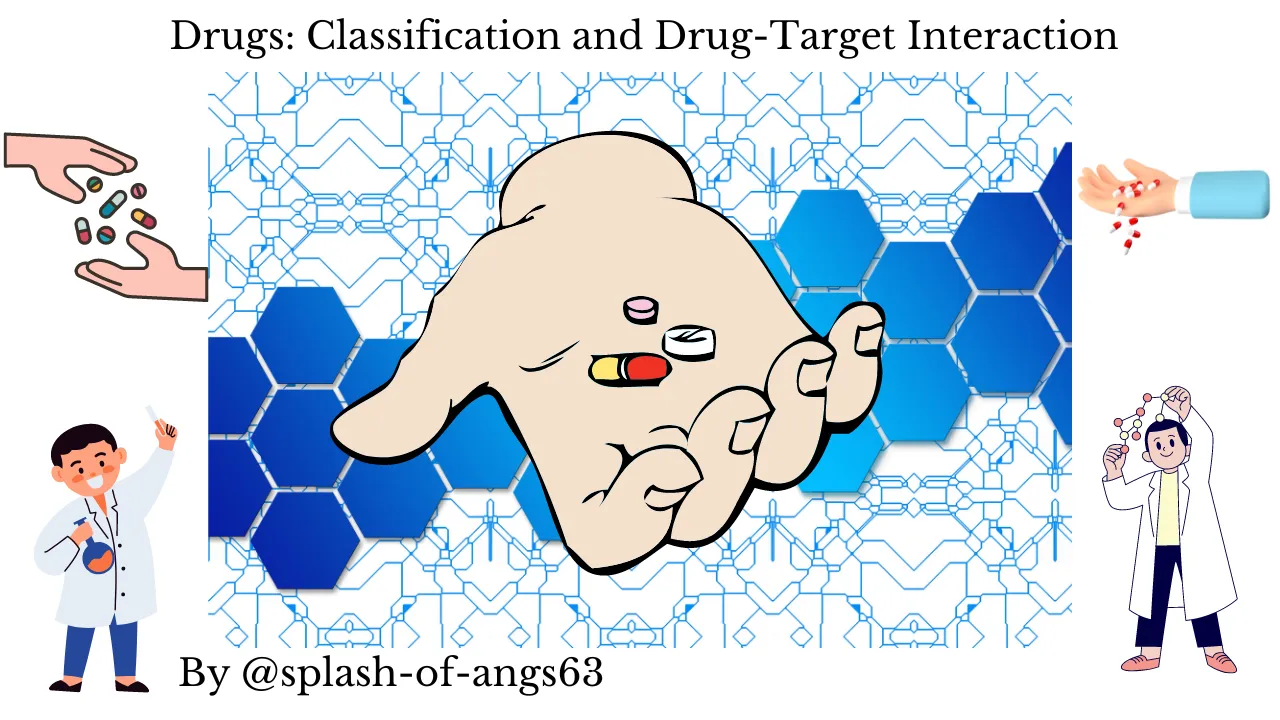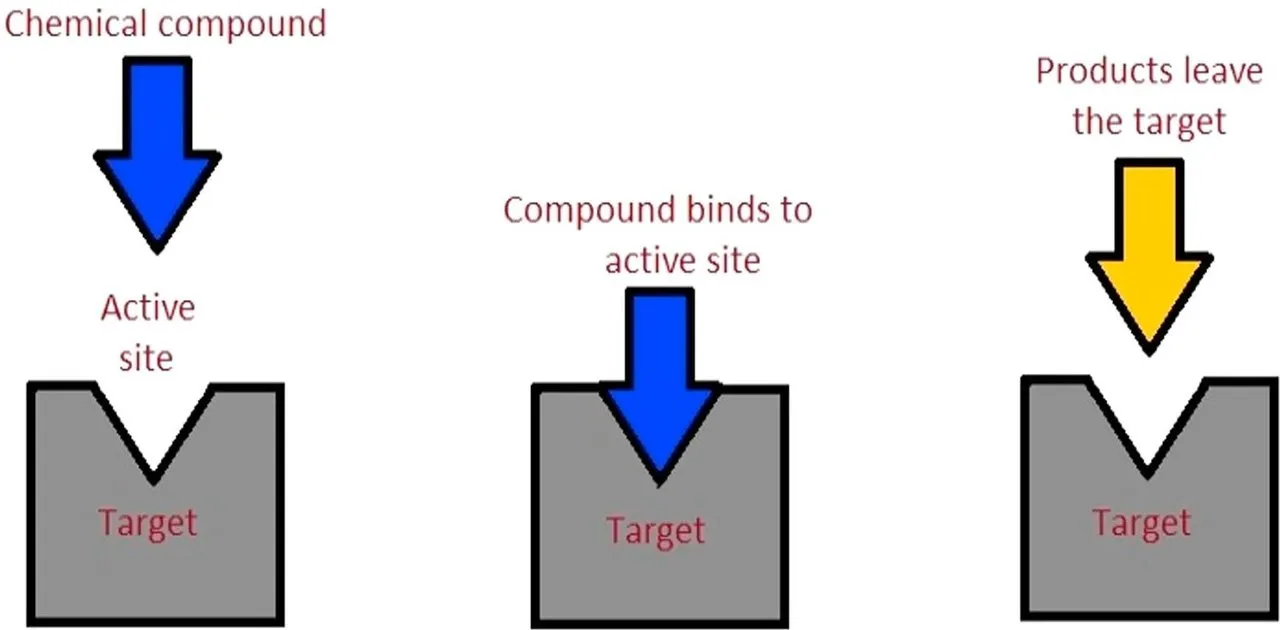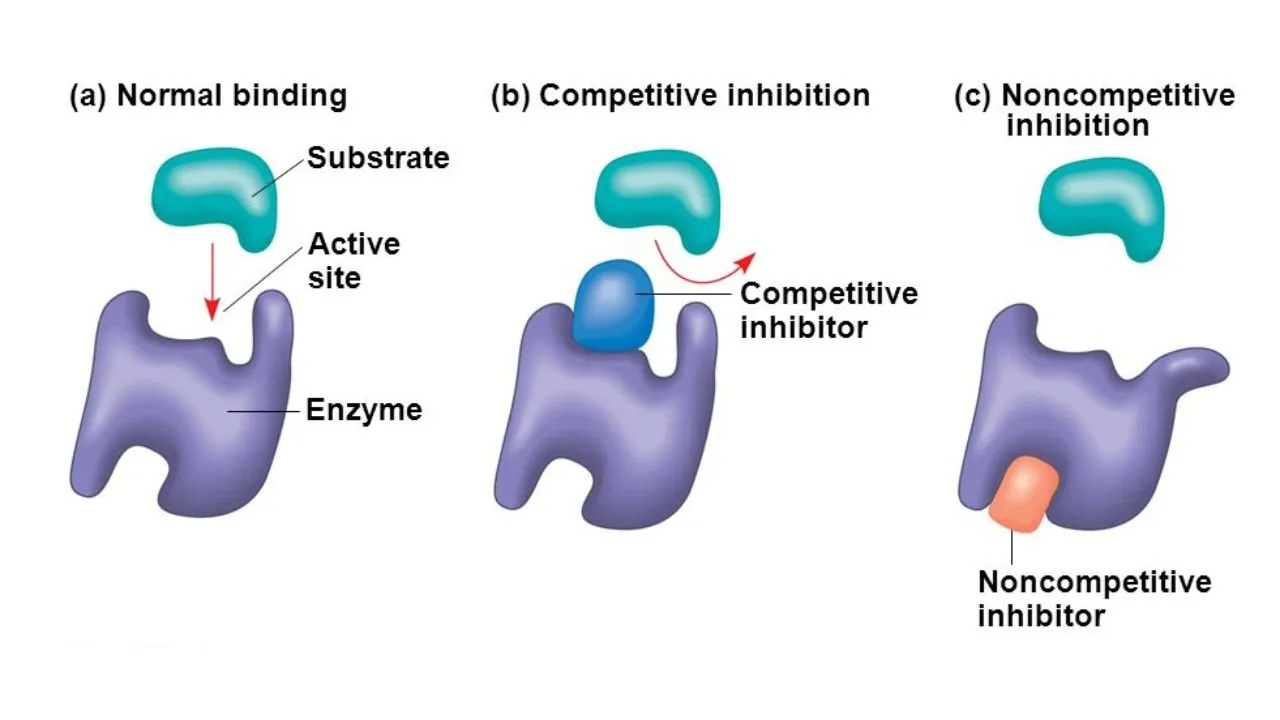The role of Chemistry for the benefit of the mankind is truly vital. It has influenced our life so much that since morning to night our activities are directly or indirectly influenced by it. For cleanliness, we use soaps, detergents, toothpastes, bleaches etc, which are all made up of chemical compounds. Similarly Clothes such as cotton, wool, or Terylene, Food materials such as carbohydrates, proteins, and fats, and Medicines such as antibiotics and antimalarials etc are all chemical compounds or are derived from them. Explosives used in war, jet fuels, Rocket propellants, building materials etc. are also chemical compounds or derived from them.
Drugs are chemicals of low molecular masses (~100-500u). The interaction of drug with macromolecular targets such as protein, lipid produces biological response. If the biological response helps to cure an illness i.e if it is therapeutic in nature, then these chemicals are called as medicines. These biological responses are used to diagnose diseases or to prevent and treatment of diseases. These drugs which are taken as medicines can also be potential poisons, if taken in excess doses than those recommended by doctors or specialists. Use of chemicals for therapeutic effect is called chemotherapy.

Classification of drugs
Drugs are classified mainly on the basis of following criteria:
(i) On the basis of pharmacological effect: Pharmacology studies the action of drugs on the biological system and the response of the body to drugs. They are based on how they effect or minimise symptoms in the body. Doctors use them or these are useful for doctors because it provides information about the whole range of drugs available in the market for treatment of a particular issue or problem. e.g.,
Analgesic: These shows pain killing effect
Antiseptic: They Kill or arrest the growth of microorganisms.
(ii) On the basis of drug action: Different drugs have different mode of action on body and produce body responses for the ailment of illness. Many drugs act by different mechanism in the body yet produces similar effects. Such drugs are included in this category which is based on the action of drug on a definite biochemical process.
E.g., Histamines can cause inflammation in our body and the action of histamines can be blocked by various ways in our body. All antihistamines inhibit the action of histamines.
(iii) On the basis of chemical structure: Many of the drugs have similar structure or they differ by slight difference in molecular structure. These kind of drugs are grouped in this category. Often drugs carrying similar structures, or similar functional groups or common structural features have similar activity. E.g., Sulphonamides, barbiturates have common structural features.
(iv) On the basis of molecular targets: Drugs possessing some common structural features, may have same mechanism of action on targets. These drug targets can be carbohydrates, lipids, proteins and nucleic acids.
Drug-Target Interaction
Macromolecules of biological origin perform functions in the body. For example: Proteins performing the role of biological catalyst in our body are categorised as enzymes, those which are essential to communication system or plays important roles as biological transducer in our body are called rceptors. Drug target interaction indicates the binding of a drug to a specified target location which results in alteration in its functions. Target or more specifically biological target is any part of the body that binds with the drug and changes physiological properties in our body. Targets could be proteins or nucleic acids that directs any change. Nuclear receptors, ion channels and G-protein coupled receptors are some of the common biological targets.

The drug binds to the target location by forming temporary chemical bonds. The drug then creates positive or negative change and after creating, it leaves the biological target. Drugs targeting the receptors can be of two types-
a)Agonists: These drugs binds to the receptor site and switches on the receptor when there is lack of natural chemical messenger. They mimic the role of natural messengers. Natural messengers could be less secreted by our body and that’s where these drugs comes handy.
b)Antagonist: They binds to the receptor site and inhibits its function. Sometimes over secretion of chemical messengers could create potential harm to our body. Blocking such messengers results in optimal balance and equilibrium of our body.
Generally by two ways the drug target interaction can occur. The first kind of drugs, known as competitive inhibitors, which compete with natural substrates for their attachment on the active site to impede the reaction. The second type of drugs, called allosteric inhibitors (Non competitive inhibitors) do not bind to enzyme’s active site rather it binds to a different site of enzyme called the allosteric site. This changes the shape of active site in such a way that substrate can not recognise it. Thus, the reactions do not proceed. These kind of blocking interaction can correct metabolic imbalance or kill pathogens to cure diseases.

Enzymes as drug target
Enzymes perform two major functions. They hold the substrate for chemical reaction. The active site of the enzyme is useful for providing sites for attachment of chemical reagents effectively. The substrate can bind to the enzyme by different interactions such as hydrogen bonding, van der waals or dipole dipole interaction.
Again Enzymes provide functional groups that attacks the substrate and carry out the chemical reaction. Through this enzymes catalyses chemical reactions in our body acting as drug targets.
Drugs can also inhibit activities of certain enzymes. Blocking the binding site of enzyme causes prevention of binding of substrate and inhibits the catalytic activity of the enzyme. The role of competitive and non competitive inhibitors have already been discussed.
A comprehensive review of feature based methods of drug target interaction prediction
Deep learning based drug-target interaction prediction
What are orbitals and quantum numbers? |ChemFam #10|
Quantum mechanical model of an atom |ChemFam #09|
A case study about the growth mechanism of CNT |ChemFam #08|
Carbon Nanotubes (Buckytubes): Types and Synthesis |ChemFam #07|
Nanomaterials: Classification and Approach for Synthesis |ChemFam #06|
Azadirachtin: Isolation, Extraction and Mechanism of Action |ChemFam #05|
Woodward-Fieser Rules for Calculating λmax |ChemFam #04|
Chemistry in ancient India |ChemFam #03|
How do soaps clean the dirt? |ChemFam #02|
What is anti egg white injury factor? |ChemFam #01|

